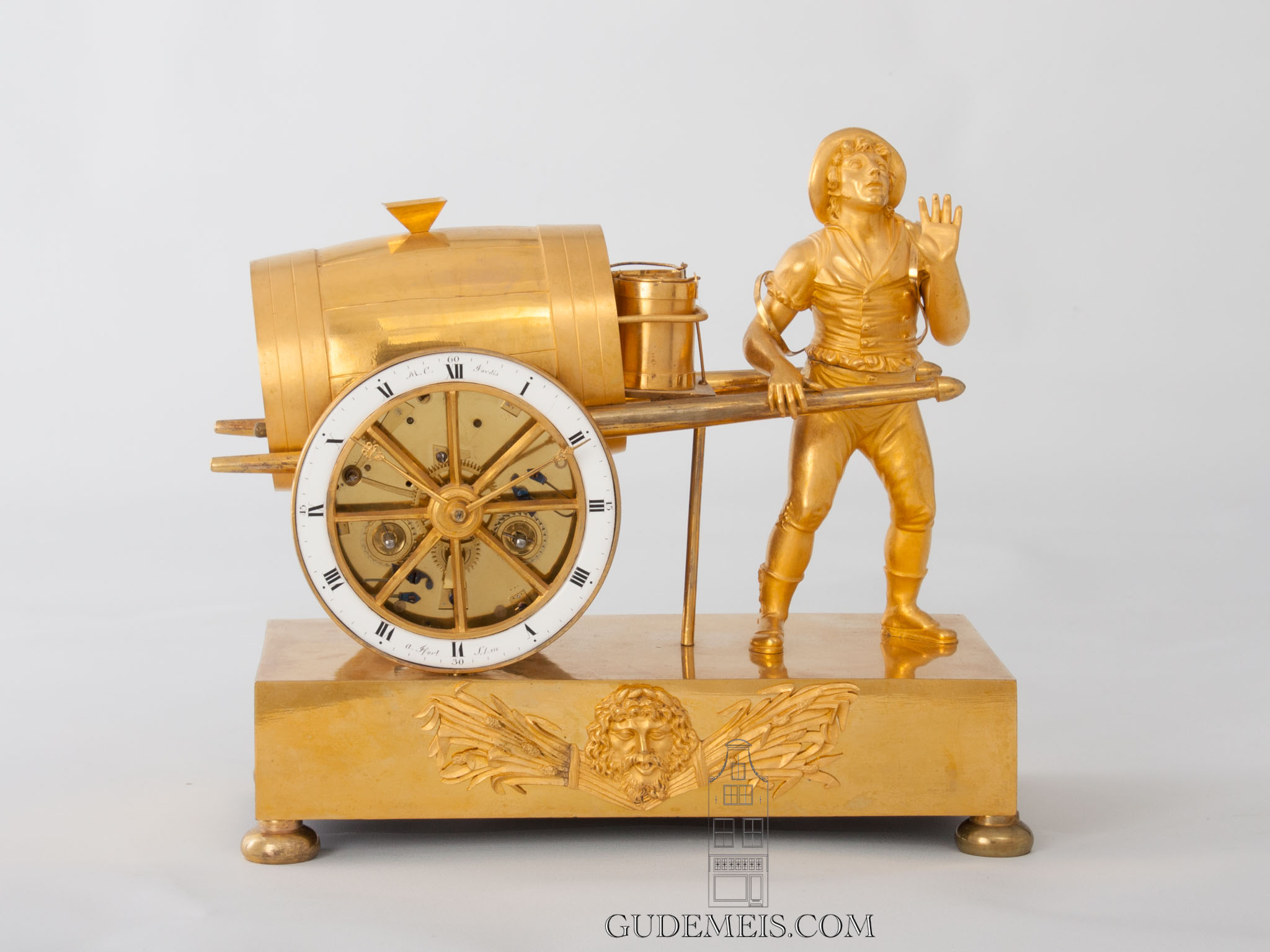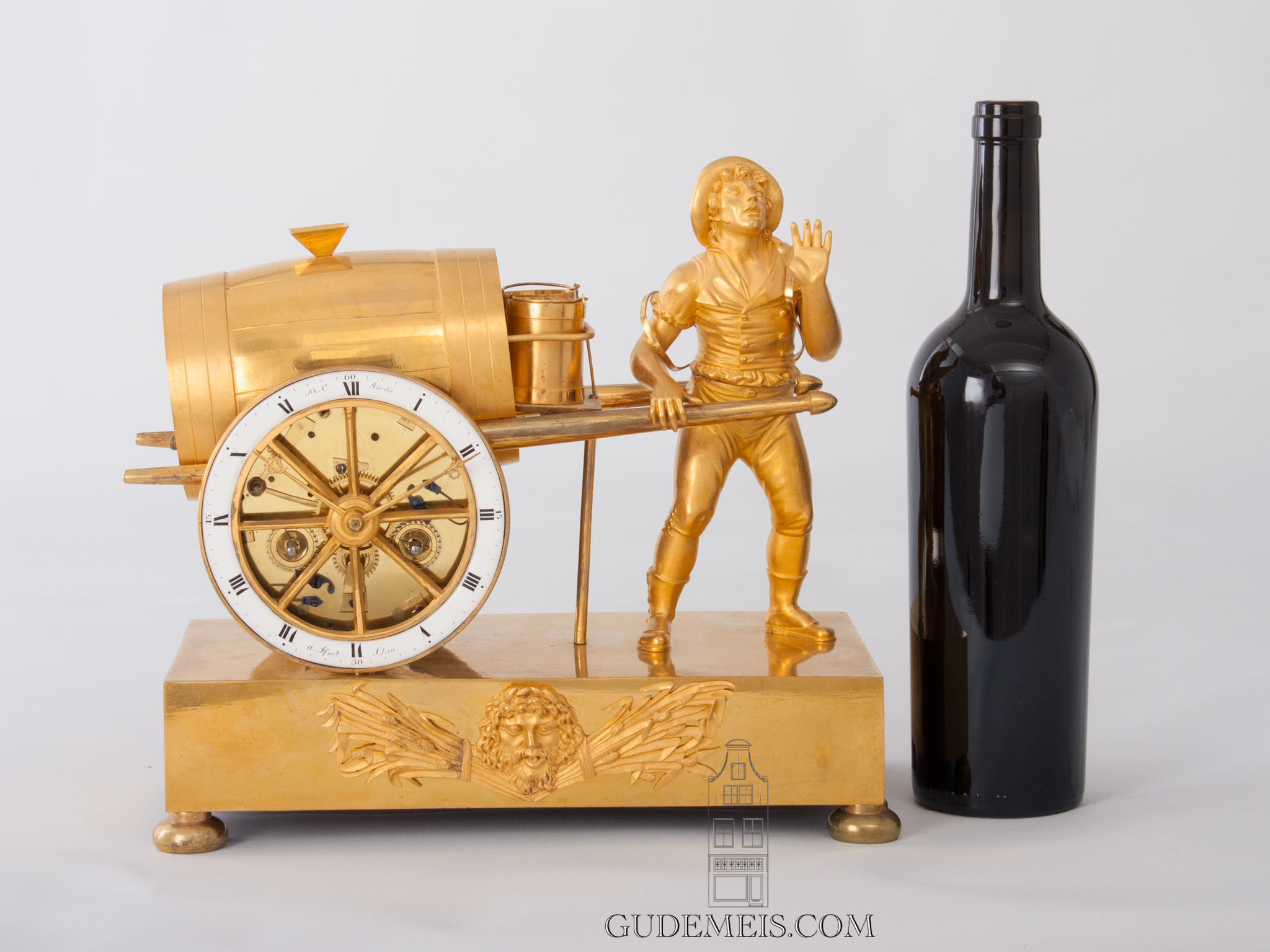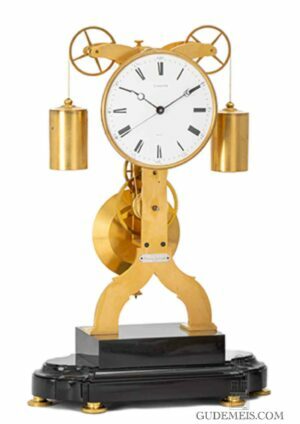A French Empire ormolu sculptural mantel clock ‘water seller’, circa 1810.
Description
Sculptural mantel clock
Around the start of the nineteenth Century the French middle class started to become more prosperous and larger. Because the taste and values of this class differed from the aristocracy a change started to appear in the subject matter of (applied-) art. Beside the Classicist subjects that were typical for the nobility, themes like family, faith and all day life became more popular. This sculptural mantel clock shows a water seller with his cart who went from door to door to sell water. Stylistically the clock still has characteristics typical for the Empire period as there are the flat base with bun feet and the thin enamel chapter ring. Also the mask at the front of the base personifying a river God fits the Classicist tradition. But the worldly humble day to day subject of the water seller clearly belongs to the upcoming taste of the Bourgeoisie. Besides the fine details of the cart and man it is especially the realistic stance of the man that is fascinating. Looking up he seems to be calling to his customers that are at higher floors. It is this realism that gives movement to the scene making it more than just a clock but a sculpture that is mesmerizing to the beholder.
The chapter ring
A nice side effect having a cart or chariot is that the wheel is also used as chapter ring and in this way integrating it nicely in the design. The 12-cm enamel chapter ring has Roman numerals and is signed M.C. Jordis a Ffort S.I.m. The movement nicely visible through the spokes. The decorative pierced hands are made of gilt brass.
striking
The typical french movement is driven by two spring barrels and has a duration of at least eight days. It is being regulated by anchor escapement in combination with a silk suspended pendulum. The clock has half hour striking on a bell by means of a countwheel.
cart
The movement is fitted in an ormolu case shaped as the wheel of a cart with a wooden barrel and two barrels. In front of it stands a water seller looking up seeming to shout. The cart and seller are on a rectangular base with an ornament of a mask flanked by plumes symbolizing a river deity at the front. The whole is placed on bun feet.























